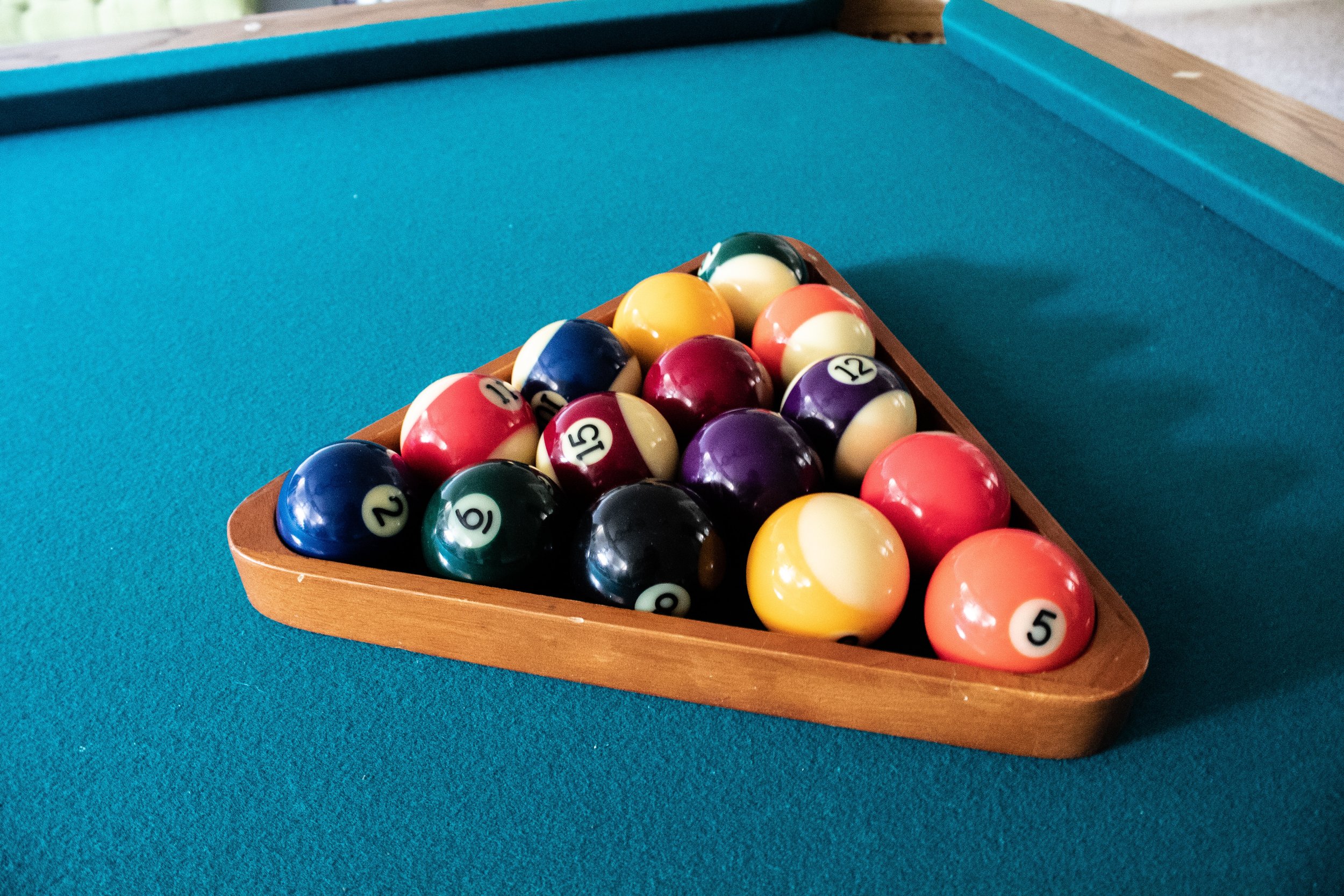How to Rack a Pool Table: A Beginner's Guide
Billiards, pool tables, and pool games have been a beloved pastime for generations. Whether you're a complete newbie or someone looking to brush up on their pool skills, understanding how to properly rack a pool table is an essential skill. In this guide, we'll break down the process of racking a pool table step by step, so you can set up for a great game every time.
Imagine the soft hum of a pool hall, the clink of balls, and the thrill of competition. Whether you're a casual player or a serious contender, knowing how to rack the pool balls can make a world of difference in the game's outcome. In this guide, we'll dive into the nitty-gritty of racking techniques that can give you an edge over your opponents.
2. The Basics of Racking
Racking a pool table is the setup phase that determines the initial position of the balls. A proper rack ensures a fair start to the game. But how do you go about it? It's simpler than you might think. Just follow these steps:
Step 1: Choose the right rack for your game.
Step 2: Place the balls in a specific pattern.
Step 3: Remove any gaps between the balls.
3. Selecting the Right Rack
The type of game you're playing dictates the type of rack you'll need. The two most common types are the triangle rack and the diamond rack. For 8-ball and 9-ball games, the triangle rack is your go-to. If you're playing a game of 10-ball, the diamond rack comes into play. Choosing the right rack ensures the balls are tightly packed, setting the stage for a solid break.
4. Arranging the Balls
Before placing the balls in the rack, give them a quick inspection. Make sure they're free of debris and dirt. Then, using your fingers, arrange the balls in the desired order. The heavier cue ball goes at the top, while the others follow a specific sequence depending on the game you're playing.
5. The Triangle Rack
The triangle rack, as the name suggests, is shaped like a triangle. It's used for 8-ball and 9-ball games. Place it at the foot of the table and ensure that the apex of the triangle points towards the table's center. Gently place the balls in the triangular slots, and remember, a tight rack is key to a successful break.
6. 8-Ball Pool: A Specific Rack
For the classic 8-ball pool, follow this specific arrangement:
Top Corner: One striped ball and one solid ball.
Other Corners: One solid ball and one striped ball.
Back Row: One solid, one striped, one solid, and one black 8-ball.
7. 9-Ball Pool: Another Approach
If you're diving into a game of 9-ball pool, the setup is different:
Front Row: Balls 1 through 9 in random order.
Cue Ball: Place it anywhere inside the "kitchen" area.
8. Solid vs. Striped: Making a Choice
Before racking, players often choose either solids or stripes through a gentle lag shot. The first ball that sinks determines their group for the game. The choice adds an extra layer of strategy to the game, making it more exciting and unpredictable.
9. Tight Rack, Solid Break: Tips for Success
A tight rack isn't just a catchy phrase; it's a crucial aspect of a strong break. A well-packed rack increases the chance of balls spreading effectively after the break, leading to a more dynamic game. To achieve this, make sure the balls are touching, and there are no gaps between them.
10. Maintaining the Pool Balls
As you play, the pool balls can collect dust and chalk residue. Regularly cleaning them with a damp cloth helps maintain their smoothness and ensures consistent rolls. Also, keep an eye out for any dents or cracks in the balls, as they can affect the game's trajectory.
11. Conclusion
Mastering the art of racking a pool table might not make you a professional player overnight, but it certainly gives you a head start. Remember, a good rack sets the tone for the entire game. So, the next time you're at the pool table, take a moment to appreciate the careful arrangement that goes into those initial moments of the game.
12. Frequently Asked Questions about Racking
Q1: How tight should the balls be in the rack? A: The balls should be touching each other, with no visible gaps for a solid break.
Q2: Can I use a different rack for different pool games? A: Yes, use the triangle rack for 8-ball and 9-ball, and the diamond rack for 10-ball.
Q3: Why is a tight rack important? A: A tight rack leads to a better break, with the potential for more balls to be pocketed.
Q4: Can I arrange the balls in any order for 9-ball? A: Yes, you can place the balls in any order in the front row for 9-ball.
Q5: Is it necessary to clean the pool balls often? A: Yes, regular cleaning keeps the balls in good condition, ensuring a smooth and consistent game.
So there you have it – a comprehensive guide on how to rack a pool table. With these insights, you're now equipped to set up the perfect game. Whether you're playing casually with friends or competing in a serious match, a well-executed rack can make all the difference. Enjoy your games and keep racking up the fun!
If you want to take your game to the next level and really put the hurting on your friends, or want to learn more tips and tricks, we do offer lessons from some of the best players in all of Washington state. You’re only one click away from being a pool shark yourself.

